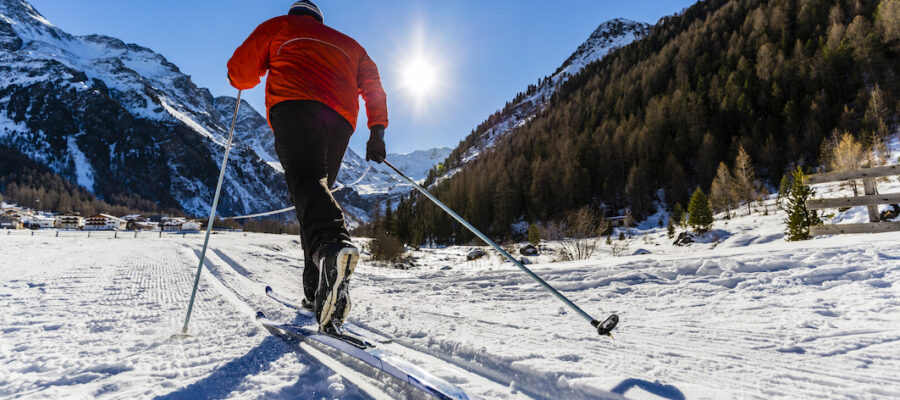Mastering classic skiing techniques is essential for maximizing your enjoyment and efficiency on the trails. In this article, we’ll delve into three core classic skiing techniques: the diagonal stride, double poling, and kick double poling.
1. Diagonal Stride
The diagonal stride is the quintessential classic skiing technique. It’s characterized by a forward-leaning motion where one ski glides forward while the other remains stationary, providing grip through the kick zone (the waxed or textured portion of the ski base). Here’s how to perform the diagonal stride:
- Starting Position: Begin with a relaxed posture, weight distributed evenly between both skis. Your feet should be hip-width apart.
- Weight Transfer: Shift your weight onto one ski while the other remains flat and stationary. This allows the grip zone to engage with the snow.
- Push and Glide: Push off the gripped ski with your foot and simultaneously move your arms in a coordinated manner. Your arm on the pushing leg side should move forward, while the opposite arm moves backward.
- Kick and Glide: As you push off with one ski, your opposite ski will kick back, providing thrust for your forward motion. The kick and glide should feel like a smooth, rhythmic dance.
- Alternate Sides: Repeat this motion alternately with each leg, creating a seamless stride. Keep your arms and hands relaxed, using the poles for balance and propulsion.
The diagonal stride is the foundation of classic skiing and is used on flat to gently rolling terrain. It’s an efficient way to cover long distances and is ideal for enjoying the serenity of the winter landscape.
2. Double Poling
Double poling is a classic skiing technique used primarily on flat or slightly downhill terrain. It involves simultaneous pole pushes and is especially effective for maintaining speed and momentum. Here’s how to execute the double poling technique:
- Starting Position: Begin with a balanced and upright posture. Hold your ski poles with both hands close to the grips.
- Pole Plant: Plant both poles in front of you at the same time. The pole tips should be angled slightly backward.
- Simultaneous Push: Push down on both poles simultaneously while transferring your weight to them. This generates forward momentum.
- Recovery Phase: As your body moves forward, bring your hands back up, ready for the next pole plant. Keep your core engaged and your movements fluid.
Double poling is an efficient technique for conserving energy on flat terrain and for maintaining a consistent pace. It’s often used in combination with the diagonal stride to create a balanced skiing rhythm.
3. Kick Double Poling
Kick double poling is a dynamic classic skiing technique that combines the power of double poling with the added thrust of a kick. It’s useful for moderate climbs and helps you maintain speed on slight descents. Here’s how to perform kick double poling:
- Starting Position: Begin with a slightly crouched stance and your weight forward. Hold your poles in a double-poling grip.
- Kick and Glide: As you initiate the double pole, simultaneously kick back with one ski while maintaining the grip on the other. This kick provides additional thrust.
- Simultaneous Pole Push: Plant both poles and push off as you kick back. This motion combines the power of double poling with the propulsion from the kick.
- Recovery Phase: After the pole push, recover your hands to the ready position for the next stroke. Keep your movements coordinated and fluid.
Kick double poling is an effective technique for maintaining momentum on rolling terrain and for tackling moderate inclines while conserving energy. It adds versatility to your classic skiing repertoire.
Conclusion
Mastering classic skiing techniques like the diagonal stride, double poling, and kick double poling opens up a world of possibilities on the trails.
These fundamental skills allow you to confidently navigate a variety of terrains, from gentle flats to rolling hills. As you become proficient in these techniques, you’ll discover the true beauty and versatility of classic skiing, making your winter adventures all the more enjoyable.

